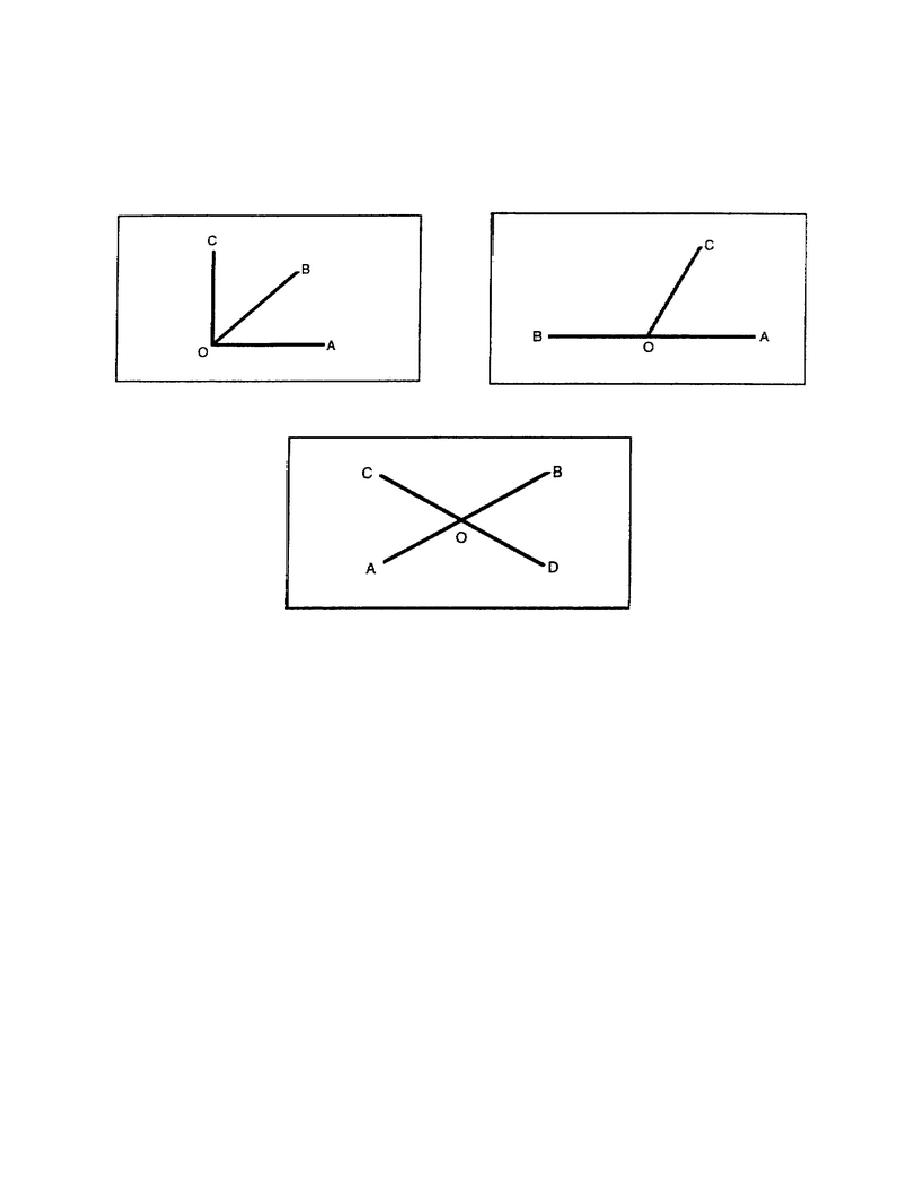
equal to a straight angle, they are called supplementary angles. In Figure 3-6, angle AOB is a straight
angle, and angles AOC and BOC are supplementary angles. Angle AOC is the supplement of BOC, and
angle BOC is the supplement of AOC. When two lines intersect, the opposite angles are called vertical
angles. In Figure 3-7, angles AOD and BOC are vertical angles, and angles AOC and BOD are also
vertical angles.
Figure 3-5. Complimentary angles
Figure 3-6. Supplementary angles
Figure 3-7. Vertical angles
3-3. Measuring Angles. Measuring angles is important in calculations for surveying problems.
Degrees (€) are used for angle measurements. An angular degree is 1/360th of a circle. The degree is
further divided into minutes (') and seconds ("), with 60 minutes in 1 and 60 seconds in 1 minute.
3-4. Generating Angles. You can generate an angle by rotating a line as shown in Figure 3-8. Rotate
line OP in a counterclockwise direction about point O, starting from line AO. By this action the angle
AOP is generated. When line OP is at one-quarter of a revolution, it is perpendicular to line AO, and a
right angle is formed. When you rotate line OP completely around the circle, it generates four right
angles (360). Thus, the total angular magnitude about a point in a place is equal to four right angles.
EN0591
3-4




 Previous Page
Previous Page
